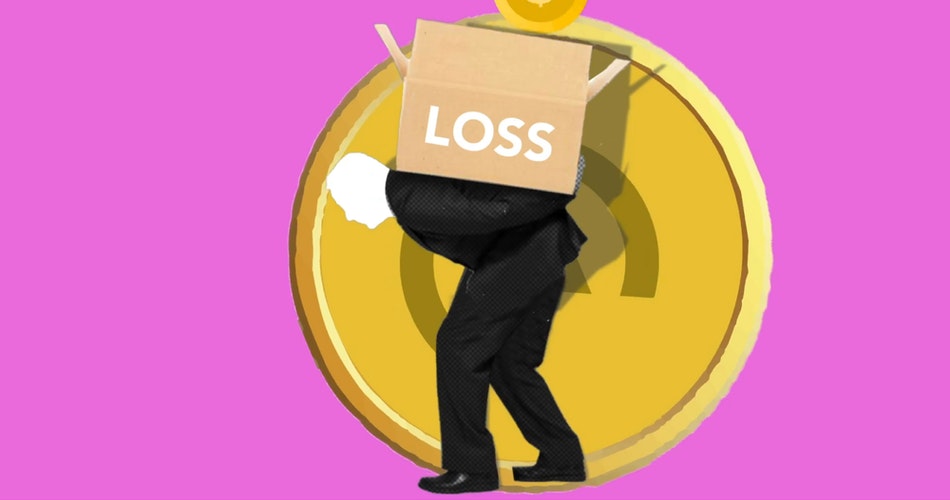We all have seen investors continuing to invest in the stock market even when they suffer heavy losses. They don’t pull out their investments because they have already invested a lot of money, time, and effort. This phenomenon is called sunk cost fallacy. Though a business term, sunk cost fallacy also influences our personal and financial decisions.
Sunk cost fallacy can be applied to simple things in life to analyze how we make wrong decisions to make our first decision right. For example, a person who buys expensive movie tickets continues to watch it even if the story isn’t interesting enough.
The sunk cost fallacy in a business can be due to managers who continue expanding a project despite not generating any profit. It is because they feel that all the time, money, and effort will go in vain if they do not see the project through. However, the money already invested cannot be earned back, irrespective of their decision to stop or continue the business.
We can only think about the sunk cost effects on a large number of businesses across the globe. Some businesses correct their decisions at the right time and prevent future losses. These businesses avoid wasting money, effort, and time by making decisions based purely on future goals. Their new decisions should be based on rationality and logic and not affected by past mistakes.
What are Sunk Costs?
A sunk cost is money spent for a specific purpose that cannot be recovered for any reason. In the business world, sunk cost refers to the invested funds that cannot be retrieved in the future.
Business decisions should ideally be based on predicted future expenses and business objectives. As sunk cost cannot be recovered, business owners and managers must not consider it when making decisions for the future. However, they often tend to invest in the same project or business to try to recover these sunk costs. Sunk cost effects can affect a business’s future if decisions are not made basis data and changing conditions rather than recovery of costs.
The History of the Sunk Cost Fallacy
Sinking costs refer to those expenses gradually proving useless from a business point of view. Although it is a term associated with business, sunk cost bias is also based on an individual’s thinking. It is a cognitive bias that stops us from making the right decisions, and when we realize our mistakes, we’ve only sunk additional money.
The sunk cost fallacy is a term that evolved from cognitive bias, which was first used in 1972 by Daniel Kahneman and Amos Tversky. Both were psychologists who laid the foundation for the study of sunk cost fallacy that evolved much later.
Kahneman received the Nobel prize in 2002 for his research on cognitive bias in the decision-making process of businesses. His research work included the mention of sunk cost fallacy. In later years, profound scholars and economists attempted to find the exact reasons behind the sunk cost fallacy. According to Richard Thaler, people tend to use services or products if they have invested money in them. Scientists like Catherine Blumer and Hal Arkes have contributed to the evolution of sunk cost fallacy theory by publishing a journal called Organizational Behavior and Human Decision Processes.
According to their experiments, the notion behind sunk costs affects our decisions on a higher level than we think. For instance, suppose a person has brought two cakes, one that costs $40 and one that costs $50. Suppose he has the choice of eating only one of those two cakes. Now, if he chooses to eat the $50 cake even after knowing that the $40 cake tastes better, his decision was affected by the sunk cost fallacy.

How do Businesses get Affected by the Sunk Cost Fallacy?
Companies are expected to act logically and rationally while making crucial business decisions. However, companies are ultimately managed by humans who can sometimes make decisions backed by emotion and not logic. Sunk cost fallacy mainly occurs when the critical decision makers are thinking irrationally. Here are some reasons why companies fall prey to the sunk cost fallacy:
Time
Students admitted to a degree usually don’t quit even after learning that they are not finding it interesting anymore. It is because they have invested much time and effort into it, and starting from scratch can be expensive. Similarly, individuals who invest their time, emotions, and money in a relationship might not call it off even if they find their partners have some major red flags. Eventually, they are trapped in a state of mind that can be referred to as sunk time fallacy.
In the same vein, imagine a decision-maker who has devoted a lot of time to plan a project and has used considerable resources to put an action plan in place. They might not be able to give up on the idea after spending so much time on it even if someone comes up with a better one. This emotional connection with time and resources used can lead to dead projects going ahead due to the sunk cost fallacy.
Money
Most businesses get trapped in the sunk cost fallacy because of their investments.
A company spends millions of dollars getting natural resources, government permissions, and NOCs to start a gas plant. Suppose that gas’s price is reduced by more than 75%. Now, the decision to continue with the business would be wrong because it may hardly cover the future investment costs.
However, the company might continue the plant operations on a much smaller scale. The company’s key stakeholders might hope for the price to rise again. If the plans and strategies are well-researched and calculated, it might provide them with some benefits. However, if their hope is only due to the kind of money they have pumped into the project, they would eventually end up losing a lot more money than they would have if they abandoned the project.
Energy
Energy or efforts to start a business can go in vain. However, the business owner might make the same business decisions just by thinking of their enormous efforts to train the employees and set up the infrastructure.
Usually, startups get trapped in sunk cost fallacy for the same reason. They start a business without a concrete plan, invest a lot of time and energy, and eventually fall into a debt trap. However, instead of pulling out at the right time, they stick with the same business plans and aggravate the problem further.
Resisting Change
It is often hard to implement a new system in the company. The employees who are used to the old process are the first ones to resist change. Managers should effectively communicate the impact of the new system to all employees. Instead of focusing on the time and resources spent on implementing the old system, they must motivate the employees to embrace the change positively.
Old technologies get obsolete due to disruptive technology. Instead of continuing with the old technologies, the companies should adapt to the newer technologies and gain a competitive edge in the market. Companies that use outdated technology that was relevant decades ago lose their relevance and become incompetent.
Fear of Experimentation
Companies that stick to the same old procedures don’t change their working ways because they fear experimenting with new things. Fear of trying out new things is nothing but fear of failing.
We have often seen old managers and leaders reluctant to experiment with new systems and technologies. They don’t want the failure to tarnish their image and reputation. Companies should recognize new talent and give them opportunities to lead their respective teams. New people not only have new ideas, but they also don’t have the fear of failure.
Unscientific decisions
Making unscientific decisions is like investing in stocks without conducting market research and understanding the company’s fundamentals correctly. Decisions made scientifically are more accurate because they are based on facts and research. Today, companies rely on data-driven decisions because they fetch the desired results in a given time.
One of the most common sunk cost examples can be a marketing team that goes with the same promotional campaigns without measuring the performance of their previous campaigns. It follows the sunk cost fallacy. Evaluation of various metrics will help them to fine-tune their promotional and marketing strategies. It will help them avoid past mistakes and create campaigns that impress more customers.

facing a business loss
How to Overcome Sunk Cost Fallacy?
We have often seen businessmen who keep pushing their ventures despite them bringing losses. They develop a bias towards the venture simply because they have put in too much effort and investments to start it. In this case, they can be either too committed or loss averse to see the right path. They choose to continue their projects to try and recover losses and to try to control the damage but end up losing more money despite knowing better. This kind of cognitive dissonance is harmful to any business.
American writer Seth Godin has written a book called The Dip. According to him, every business goes through a challenging phase before reaching the top. However, entrepreneurs must realize when it is a dip and when a dead end. If it seems to be a dead end, they must quit the business immediately and realign their energy and efforts to some other project.
Here are some tips for entrepreneurs who want to avoid falling into sunk cost fallacy’s trap:
Integrate Creative Tension
Businesses should build some tension in their creative process. Suppose that a software company is run only by a creative team. Now, if only the creative team is involved in designing a website, they might suggest many expensive designs and customizations. However, if a financial team is there to look after the budget, there won’t be any misuse of the available resources. This phenomenon creates tension in monitoring the process and avoid losses due to commitment and self-justification bias.
Avoid Blind Bravado
The sunk cost fallacy usually affects entrepreneurs who believe that a project will work despite it incurring heavy losses. Such entrepreneurs should keep their minds open to receive feedback and suggestions from their leadership team and team members.
A healthy conversation among the team will allow them to see the red flags of a faulty process. Companies should take notice of these flags and make the necessary changes before it leads them to worse ones.
Don’t Get Too Attached
Too much personal attachment to a specific project or startup means the entrepreneur is emotionally invested in it and associates their identity with it. Entrepreneurs must conduct business only to make a profit and grow. They must avoid too many emotions and attachments to intangible things like processes and business ideas. In short, they must think practically and act rationally.
Being Realistic and Futuristic
Entrepreneurs must stop looking at the past and consider the investments, time, and effort they have put into a particular project. It will not only lower their morale but will also affect their decisions. Instead, they must stop and think about whether the goals they had set for their business are attainable in the present situation or not.
They should be honest with themselves and set goals that are realistic in the future. Investing more in a failed project makes more sense when they have the ideas and grit to take on new projects and be successful.
Tracking Investments More Closely
Tracking investments closely is a habit that entrepreneurs can acquire to avoid any unnecessary loss in the business. Also, while keeping track of the investments made in the past and present, they must consider the expenses associated with new opportunities and businesses. Making a plan for each project and their cost estimates will help them stay a step ahead in the business.
Ultimately, businesses must remain realistic and pragmatic about project prospects. They must be able to cut their losses and walk away from a situation at the right time.
Have you faced a situation where the sunk cost fallacy has gotten you into a world of unnecessary trouble?




